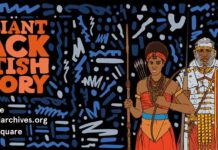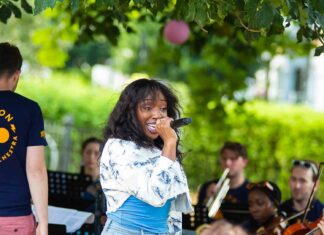
Local author Marlowe Russell will be reading from and talking about her moving novel, Bantling, much of which is set in South London, at the Carnegie library next week.
It traces the lives of a group of people centred on a man whose origins are unknown to him and his mother’s search to find him.
It ranges from Clapham through Stockwell and Peckham to Hull, Sydney, and an aircraft carrier in the Pacific during the Second World War.
Russell, who has been a trustee of Tulse Hill’s South London Botanical Institute since 2007, found after his death that her father was born in Clapham Maternity Hospital, to an unmarried woman who was a grocer’s book-keeper from the Isle of Wight.
Her fictional novel grew from that.
She will be the next writer to feature in the library’s Second Tuesday series on 9 April at 7pm. Admission is free. You can reserve a seat via Eventbrite.
Carnegie library. 192 Herne Hill Road, SE24 0DG
This review of Bantling was first published in the Brixton Bugle …
Bantling by Marlowe Russell
A bantling is a young child, a brat, a bastard child. The bantling at the centre of this beautifully crafted book is Timmy (later Sam). It is his story (loosely that of the author’s father) and one of loss, identity, love and art.
The other characters are Timmy’s mother, Violet and Ellen who takes Violet and Timmy in.
The author takes us to Peckham, Stockwell, Herne Hill, Whitechapel, Southampton, Hull, the Pacific ocean and Australia, weaving her rich images and emotionally and historically authentic dialogue throughout.
It is intimate and domestic and deeply moving set against the sweep of poverty and wars from 1926 to 1949.
I loved this book. I loved the sense of being in places I know and don’t know, (like in Happiness by Aminatta Forna, rooted in South London and elsewhere) and accompanying Timmy/Sam on his journey through time, space and family.
Nature and art are woven through the skilfully structured story. Each chapter is set in a specific time and place and told through the very different voices of the three characters. We watch their lives unfold as they deal with pain, violence, loss, poverty, self-harm and love.
I felt I was watching a film with its the real and complex characters and their struggles and triumphs. The colourful and vividly drawn images lit up on my mind’s screen: the pink corsets ‘like giant Elastoplast bandages’ drying in Hull; the much-needed rose for the vicarage in Stockwell – ‘Something with a touch of pink. Or a hint of gold, the colour of cream on top of the milk’; the fabrics behind the shop windows with their vermillion tints, colour cracking open the grey of London, those ‘grays that fade into mauve’; the beetroot purple-red soup of Sydney.
The beauty to be found in the present and the ordinary.
Russell subtly sketches the effects of war on people and places. The scene where Timmy visits the ‘Guernica’ exhibition in the East End of London is deeply affecting, reminding of the power of art to move and change us.
The hopeful aspect of working- class and international solidarity lurks in the background. Timmy/Sam’s own experience of war is viscerally convincing.
By telling the stories of Timmy/Sam, Violet and Ellen the author connects us to turbulent and traumatic historical and personal events. Yet, a glorious humanity and joy shine through the scenes of pain, violence, poverty and loss, sweeping like an exhilarating floodlight as Timmy/Sam might say.
Magi Young
















